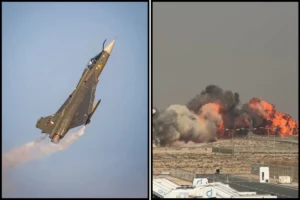
China’s Chang’e-6 lunar probe looks is prepared to begin its historic return to Earth from the moon’s far side after collecting samples that scientists believe may help answer critical questions regarding the early formation of the solar system.
Chang’e-6, named after the ancient Chinese moon goddess, was launched on May 3 from Hainan in southern China.
The completely robotic probe landed on Sunday in a hitherto undiscovered spot in the South-Pole Aitken Basin, a massive impact crater on the moon’s side face away from Earth.
China’s previous Chang’e mission gathered materials samples from the moon’s near side in December 2020, resuming global lunar material retrieval efforts after 44 years.
The former Soviet Union’s uncrewed Luna 24 mission launched in 1976, recovered 170.1 grammes (6 ounces) of samples from Mare Crisium, or ‘Sea of Crises’, on the moon’s near side.
Between 1969 and 1972, six crewed Apollo flights retrieved 2,200 samples weighing a total of 382 kilogrammes, also from the moon’s side facing Earth.
The chief of the European Space Agency’s lunar science office, James Carpenter, stated, “The samples collected by the Apollo missions from the moon’s near side suggested the South-Pole Aitken Basin on the far side was caused by an epoch of extremely heavy bombardment of the solar system, Earth and moon”.
Carpenter went on to say, “This is a core event in the history of the whole solar system, but there is some controversy about whether it happened or not”.
“To understand that, you need to anchor those events, and that’s going to be done with samples from the lunar far side from the South-Pole Aitken Basin”, Carpenter added.
Also read: Closing Bell: Sensex, Nifty Climb Over 3% To All-Time Highs
To read more such news, download Bharat Express news apps


















